Terebess Asia Online (TAO)
Index
Home良寛大愚 Ryōkan Taigu (1758–1831)
良寛筆「自画像・歌賛」
Self-portrait of Ryōkan with inscribed verse"It is not that
I avoid mixing
with the world;
but I do better
playing alone."
世の中に | yo no naka ni | in the world
まじらぬとには | majiranu to ni ha | mixing-not that
あらねども | aranedomo | not
ひとり遊びぞ | hitori asobi zo | playing alone
我はまされる | ware ha masareru | by myself is better
"There are three things I detest: professional calligraphers' calligraphy, professional poets' poems; and professional cooks' food."
RyōkanThe Complete Haiku in 5 languages
Complete haiku in Japanese (DOC)
Versión en español (DOC)
Minden haikuja magyar fordításban
DOC
-------------------
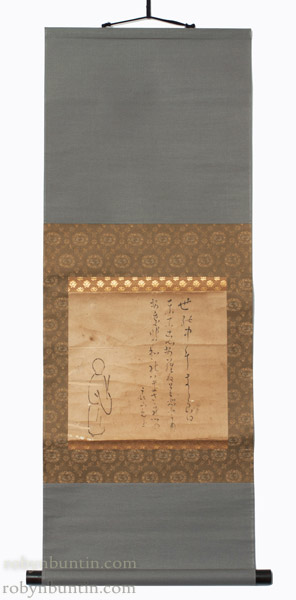
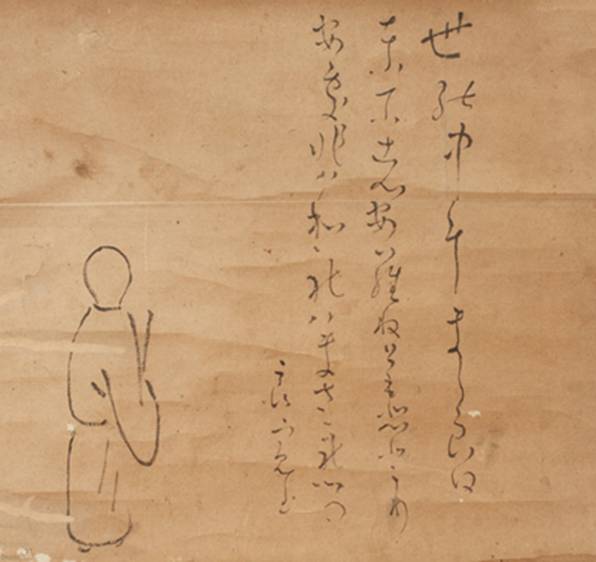
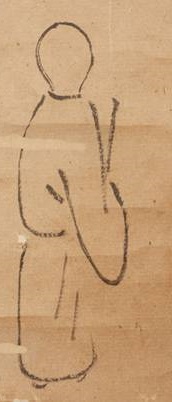
Self-portrait by Ryōkan, 24 x 26 cm
あ と 世
そ に の
び は 中
ハ あ に
わ ら ま
れ ね じ
は ど ら
良 ま も ぬ
寛 さ ひ
書 れ と
る り
"It is not that
I avoid mixing
With this world;
Better for me is enjoying
Life on my own.
Brushed by Ryokan"
--------------------------

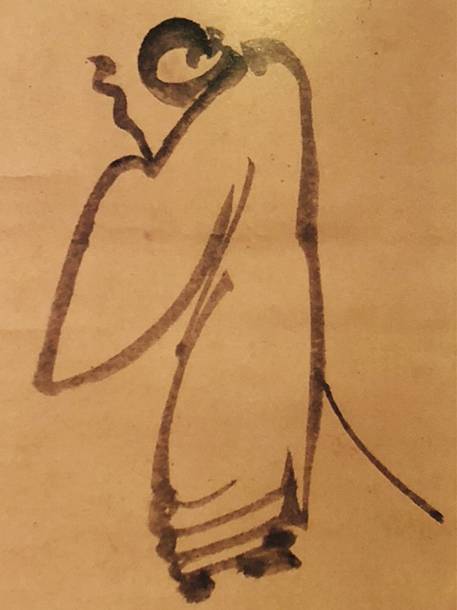
自画像
是此誰 是れは此れ誰ぞ 大日本国国仙真子(こくせんししこ) 沙門良寛Autoportrait de Ryōkan
"Qui-suis-je? Je suis le vrai fils (le disciple) de Koku(sen)* du grand pays Japon". Śramaṇa Ryōkan* 大忍国仙 Tainin Kokusen (1723–1791)
-----------------------
Self-portrait by Ryōkan
-----------------------
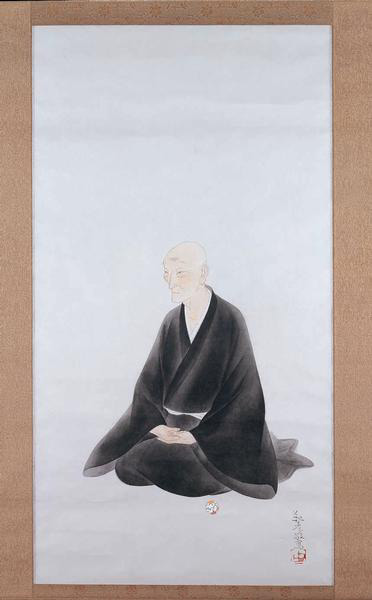
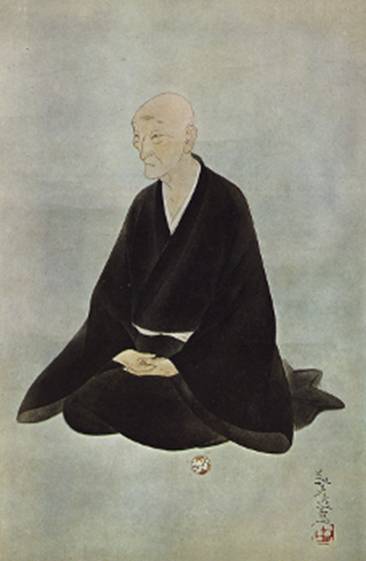
“Ryōkan” by 安田靫彦 Yasuda Yukihiko (1884-1978)
“Ryōkan and Nun Teishin” by Yasuda Yukihiko
The Japanese painter Yasuda Yukihiko (安田靫彦 1884-1978) perceived Ryōkan’s character through his calligraphy.

Ryokan by 安田靫彦 Yasuda Yukihiko (1884-1978)
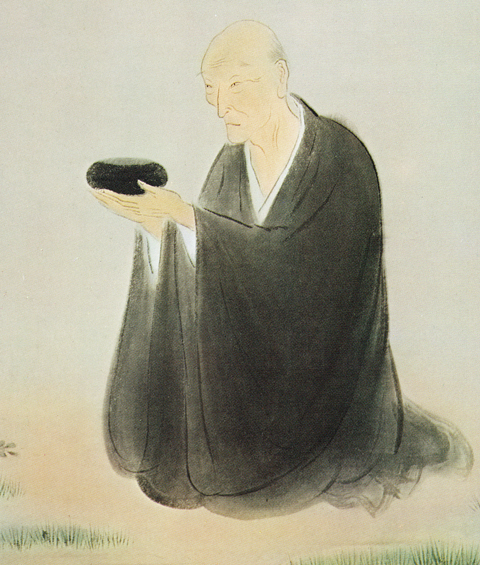
------------------------
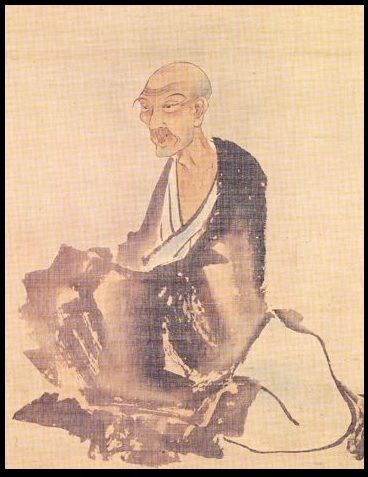
Portrait of Ryokan by Miyagawa Rokusai, painted in 1830
---------------------------
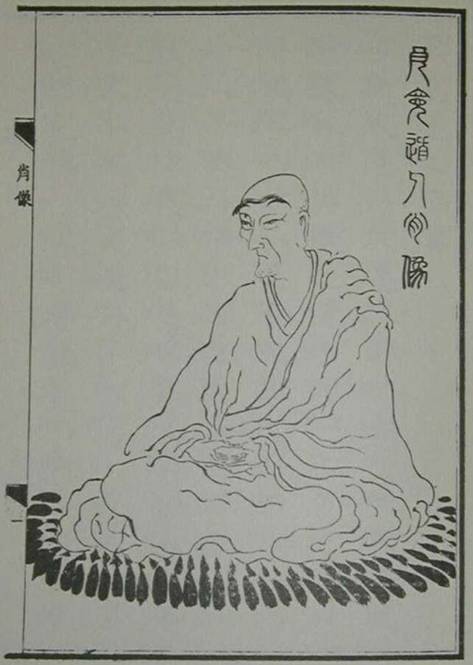
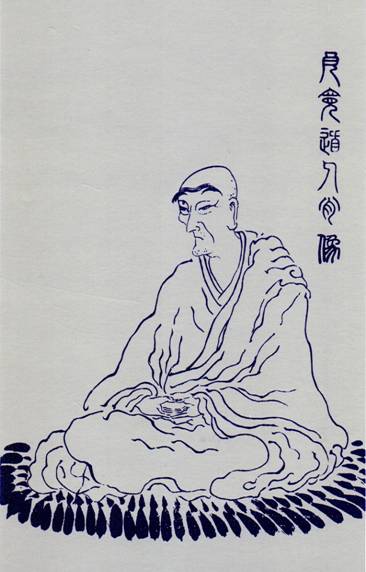
Portrait de Ryōkan, exéccuté par le maître Zen KENGON Zōun aprés les dessins de Teishin (貞心, 1798-1872) et de Henchō,
deux disciples fidèles de Ryōkan. Considéré comme le plus ressemblant, il est reproduit de l'édition fac-similé,
par le Pr. Kiichi KATÔ, du Ryōkan dojin ikō (recueil de poèmes chinois de Ryōkan édité par Zōun en 1867).
---------------------
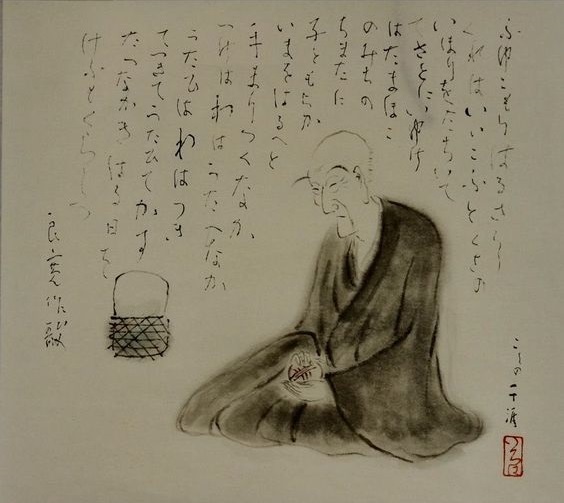
---------------------------------
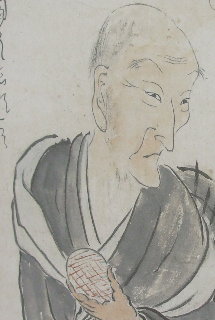
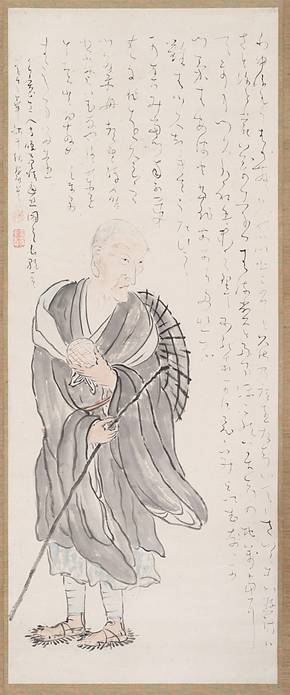
『良寛和尚図』
遍澄 (1801-〜1878) 画
蔵雲 (1812-〜1869) 賛--------------------------------
五合庵
Gogō-an, the cottage where Ryōkan lived from 1804 to 1816 (reconstructed in 1914)
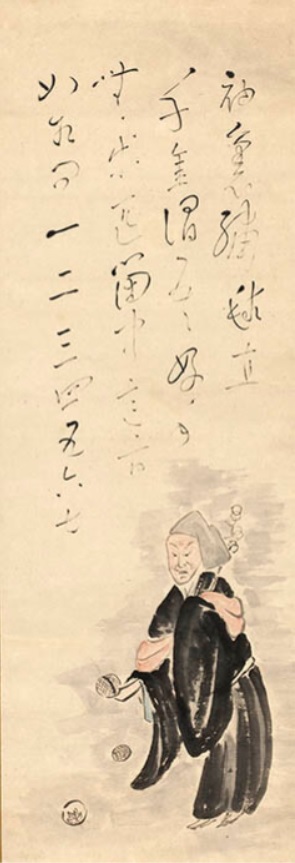
自画賛 良寛像
袖裏繡毬直千金
良寛筆
じがさん りょうかんぞう
しゅうりのしゅうきゅうあたいせんきん
頭巾(ずきん)をかぶり、錫杖(しゃくじょう)を持ちながら手まりを二、三個袖から出している、良寛自筆の画賛です。良寛には、行燈(あんどん)の横で読書している自画賛もありますが、その画像と大変似通ったやさしい風貌をしています。賛は、得意のまりつきの詩です。手まりでは、誰にも負けないという自負心が溢れています。良寛にとって、まりつきは、禅の自由無礙(むげ)のあらわれそのものです。【江戸時代 19世紀 個人蔵】
Self-portrait of Ryokan
Sleeve embroidery
By Ryokan
self-portrait by Ryokan
Sleeve embroidery with ball-shaped gold ball on the reverse side of the sleeve
This is a self-portrait by Yoshihiro Ryokan, wearing a hood and holding a tsukkyo (Japanese ceremonial staff) with a couple of temari (Japanese traditional ball-shaped objects) sticking out of his sleeves. The gentle appearance is very similar to that of a self-portrait of Yoshihiro reading beside an andon (Japanese lantern). The praise is a poem with mari, his specialty. The praise is a poem in Maritsuki, his specialty, and is filled with pride that he is second to none in the art of handmade Maritsuki. For Yoshihiro, maritsuki is a manifestation of the free and unhindered nature of Zen.Edo period, 19th century (Private collection
Translated with www.DeepL.com/Translator (free version)
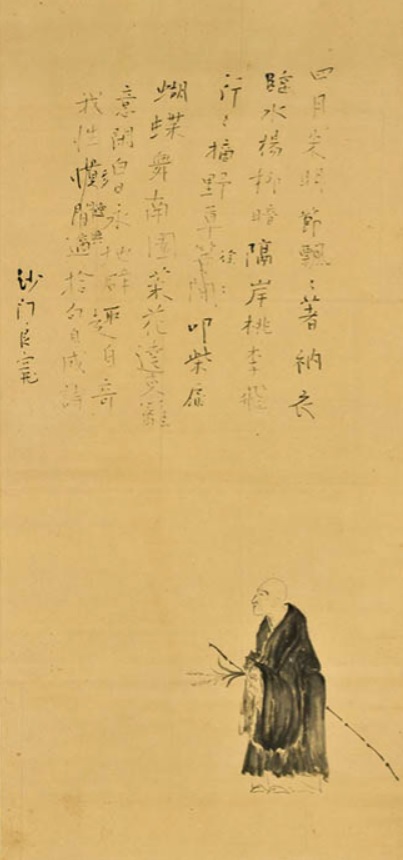
自画賛 良寛像
四月朱明節
良寛筆
じがさん りょうかんぞう
しがつしゅめいのせつ
良寛の自画賛といわれている有名な作品で、托鉢の様子が描かれています。手には、藜(あかざ)の杖と摘んだ野草が描かれています。一説には、分水町笈ヶ島(現・新潟県燕市)の平原家の菅田(すげた)から花を折り取った良寛の姿を見つけた主人が書をしたためてほしいと無理強いしたため、即興で漢詩の賛を書いたといいます。賛は楷書で書かれており、晩年の作品らしく自由自在な書風で生き生きとしています。【江戸時代 19世紀 個人蔵】
Self-portrait of Ryokan
April Shumyoji
by Ryokan
self-portrait by Ryokan
April Shumei-no-setsu
This famous work, said to be a self-portrait by Yoshihiro, depicts Yoshihiro begging for alms. In his hands are depicted a lamb's-horse staff and wild plants he has picked. According to one theory, when the master of the Hirahara family of Oigashima, Bunsui-cho (now Tsubame City, Niigata Prefecture), found Yoshihiro folding flowers from the Sugeta, he forced her to write him a poem. The praise is written in block style, and the free and free style is lively, as is typical of works from his later years.Edo period, 19th century (Private collection)
Translated with www.DeepL.com/Translator (free version)